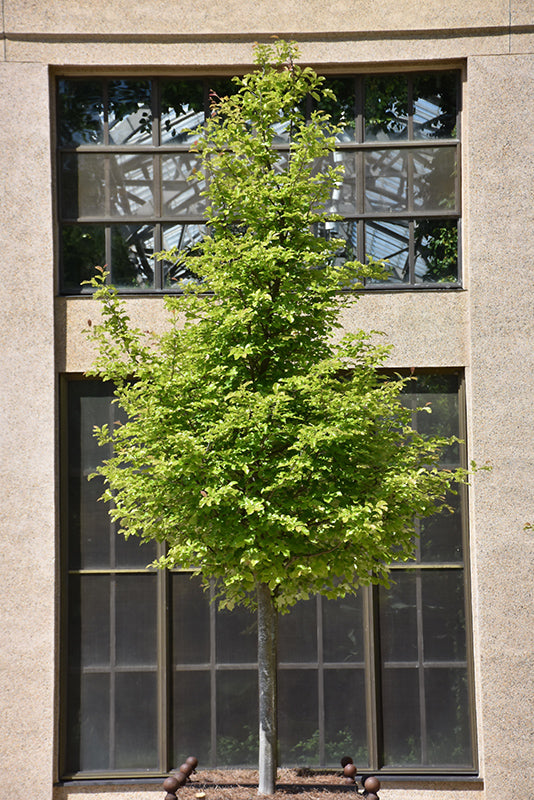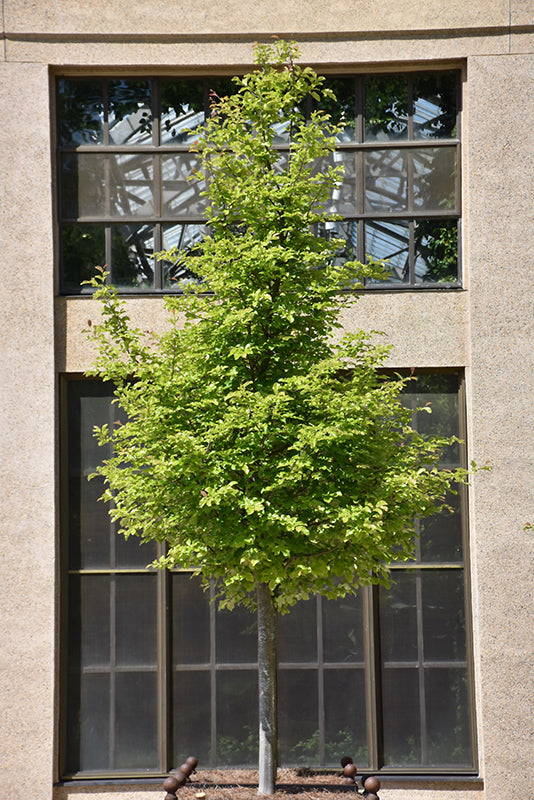Persian Ironwood or Persian Parrotia has forest green deciduous foliage which emerges burgundy in spring on a tree with an oval habit of growth. The serrated oval leaves turn an outstanding orange in the fall. The peeling brown bark adds an interesting dimension to the landscape.
Persian Parrotia is a deciduous tree with a shapely oval form. Its average texture blends into the landscape, but can be balanced by one or two finer or coarser trees or shrubs for an effective composition.
This is a relatively low maintenance tree, and is best pruned in late winter once the threat of extreme cold has passed. It has no significant negative characteristics.
Persian Parrotia will grow to be about 30 feet tall at maturity, with a spread of 30 feet. It has a low canopy with a typical clearance of 4 feet from the ground, and should not be planted underneath power lines. It grows at a medium rate, and under ideal conditions can be expected to live for 80 years or more.
This tree should only be grown in full sunlight. It is very adaptable to both dry and moist locations, and should do just fine under average home landscape conditions. It is not particular as to soil type or pH. It is highly tolerant of urban pollution and will even thrive in inner city environments. This species is not originally from North America.
Details
Botanical Name
Parrotia Persica
Common Name
Persian Ironwood
Hardiness Zone
- 6a
Appearance
Max Height
30 feet
Max Spread
30 feet
Plant Form
- Oval
Foliage Colour
- Forest Green
Fall Colour
- Orange
Flower Colour
Edible
Edible Component
Edible Harvest Period
Edible Use
Fruit Colour
Growing
Flowering Period
Moisture
Adaptable to Dry and Moist
Sunlight
Full Sun
Maintenance
Low
Deer Resistance
Get more information about this plant and others with our comprehensive plant finder tool.




